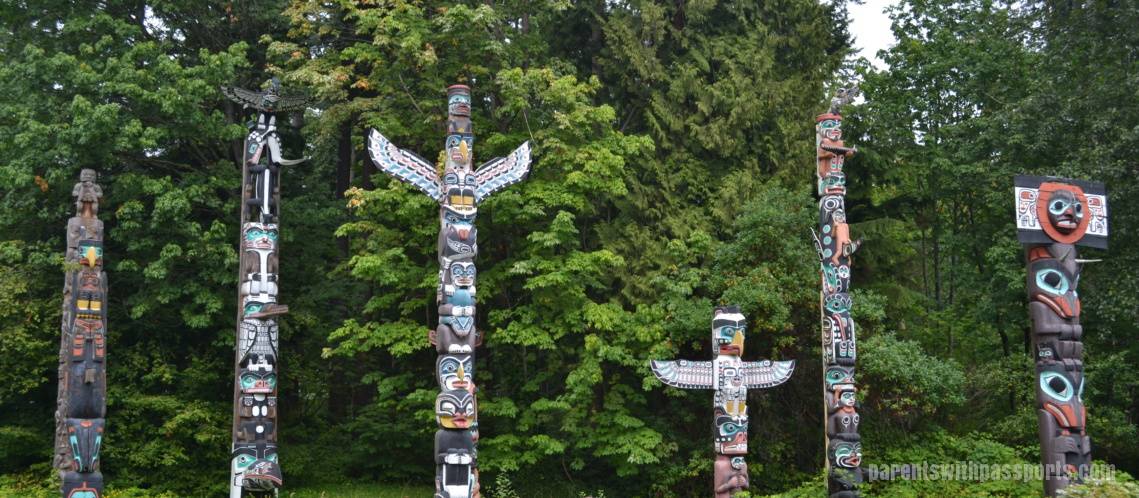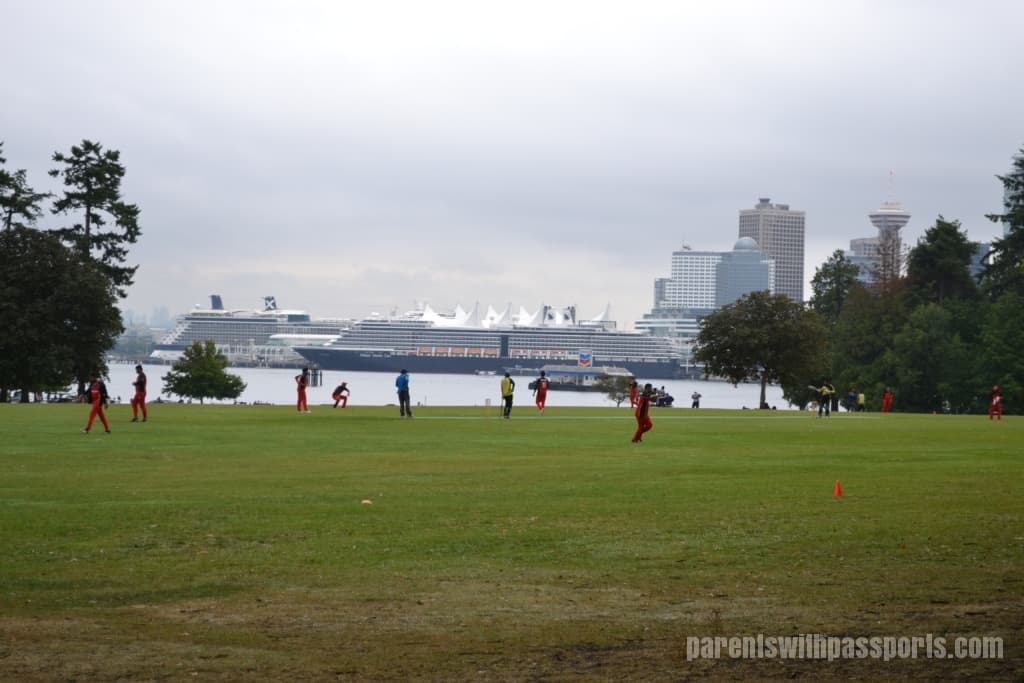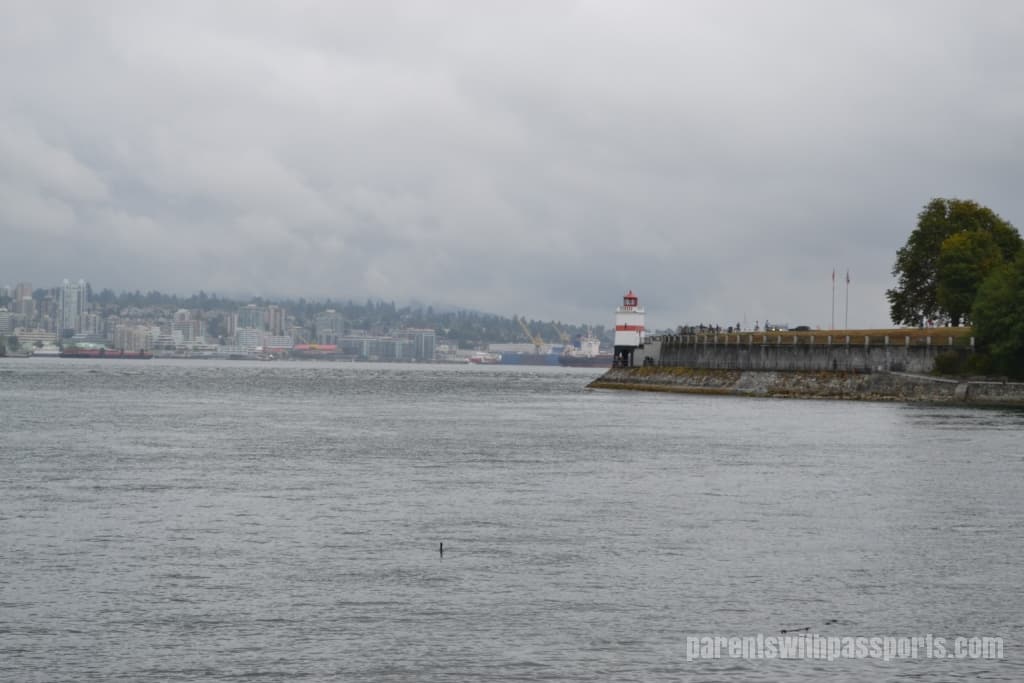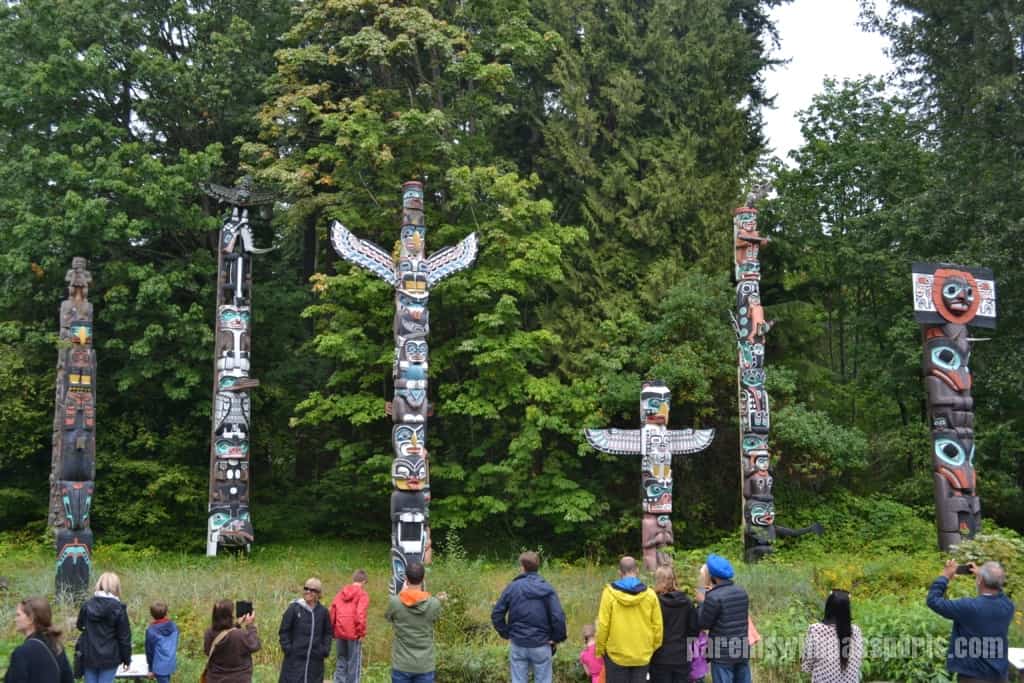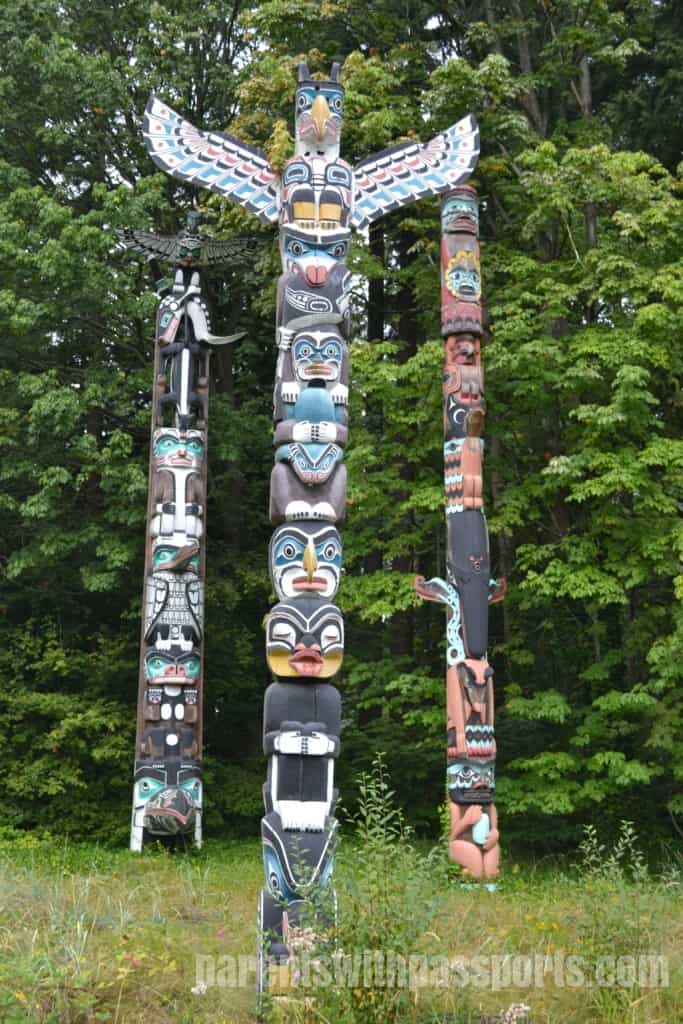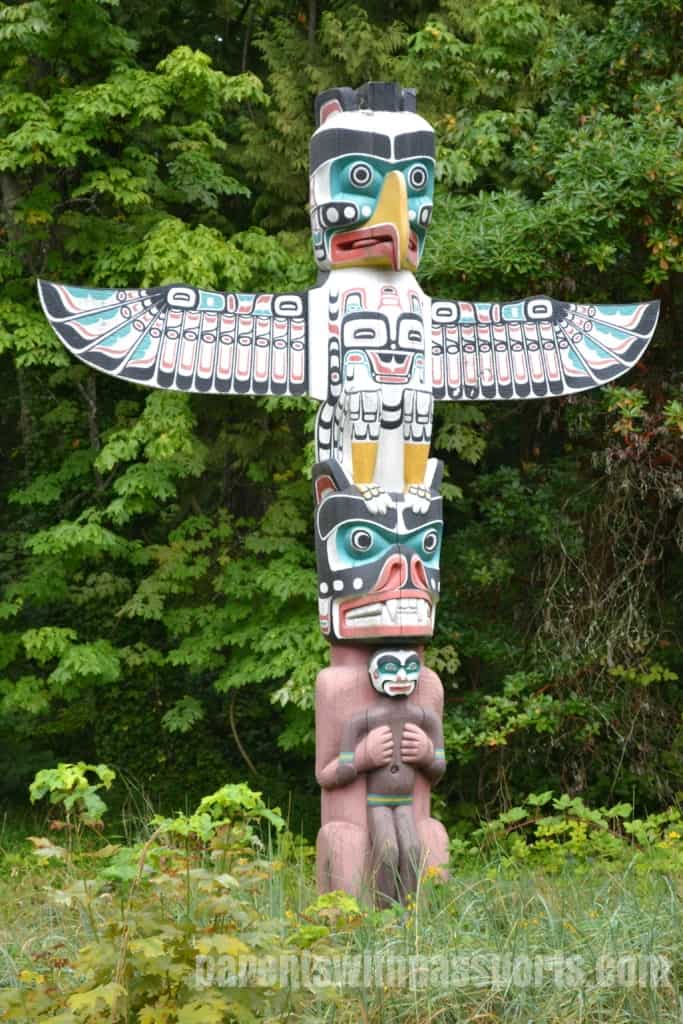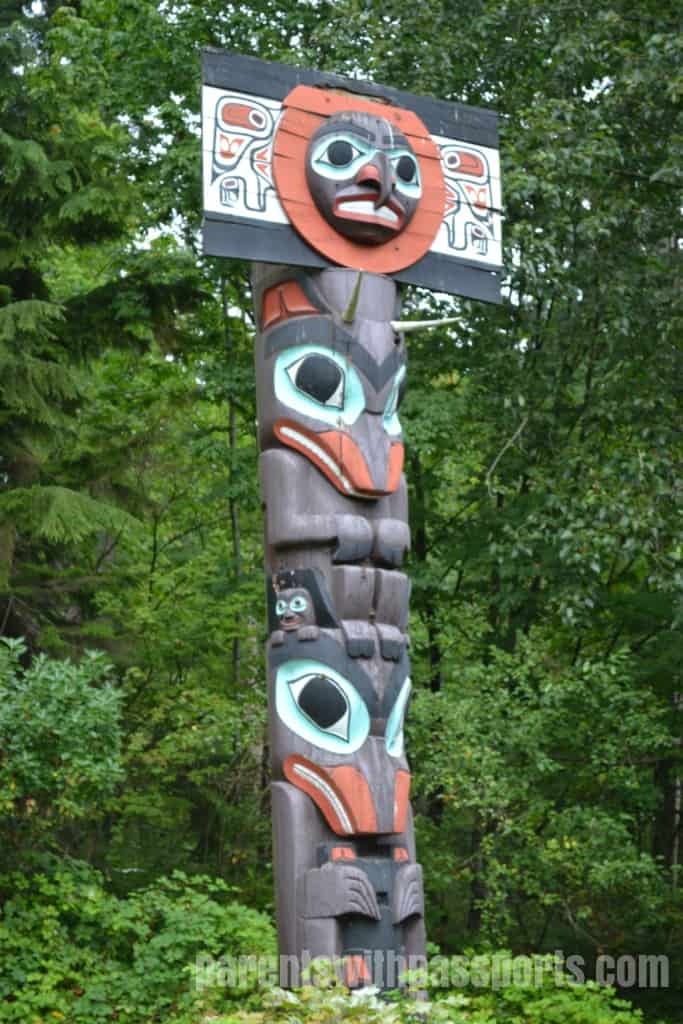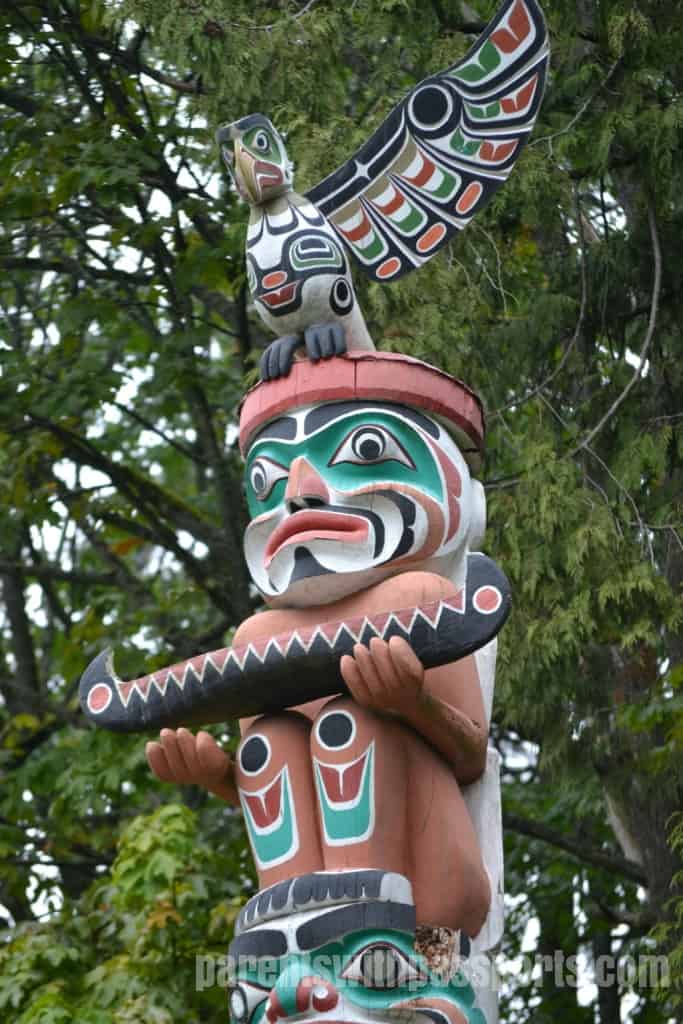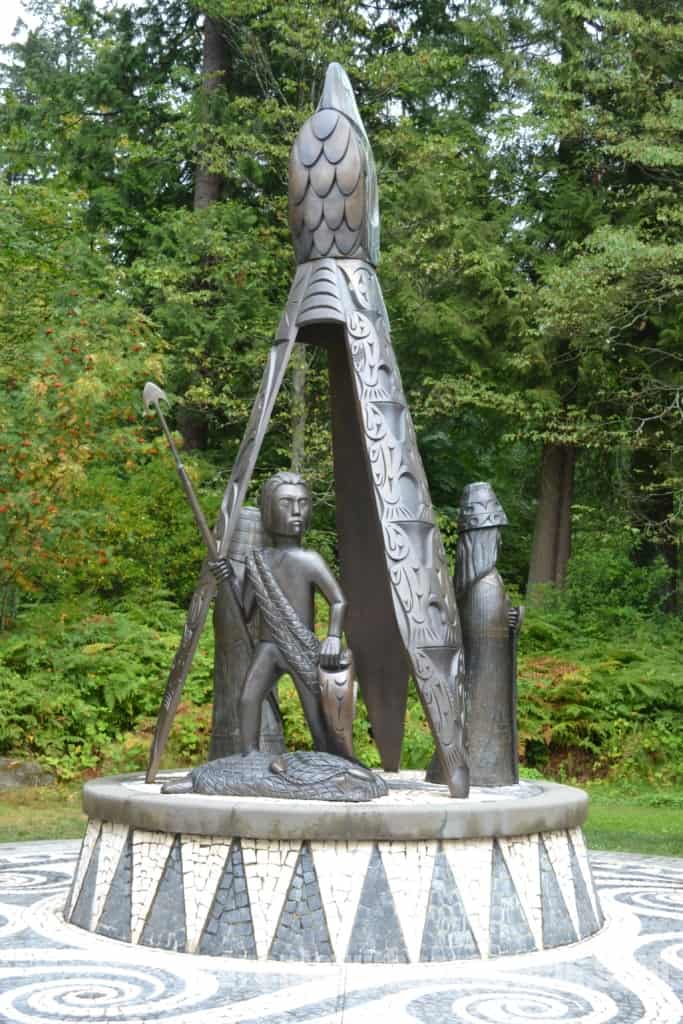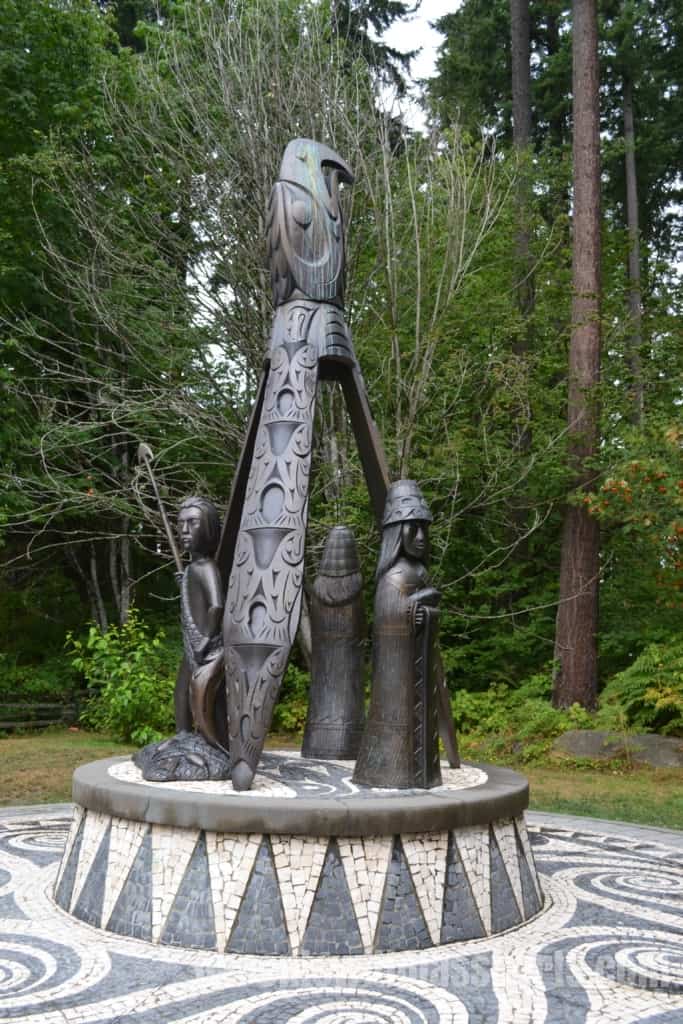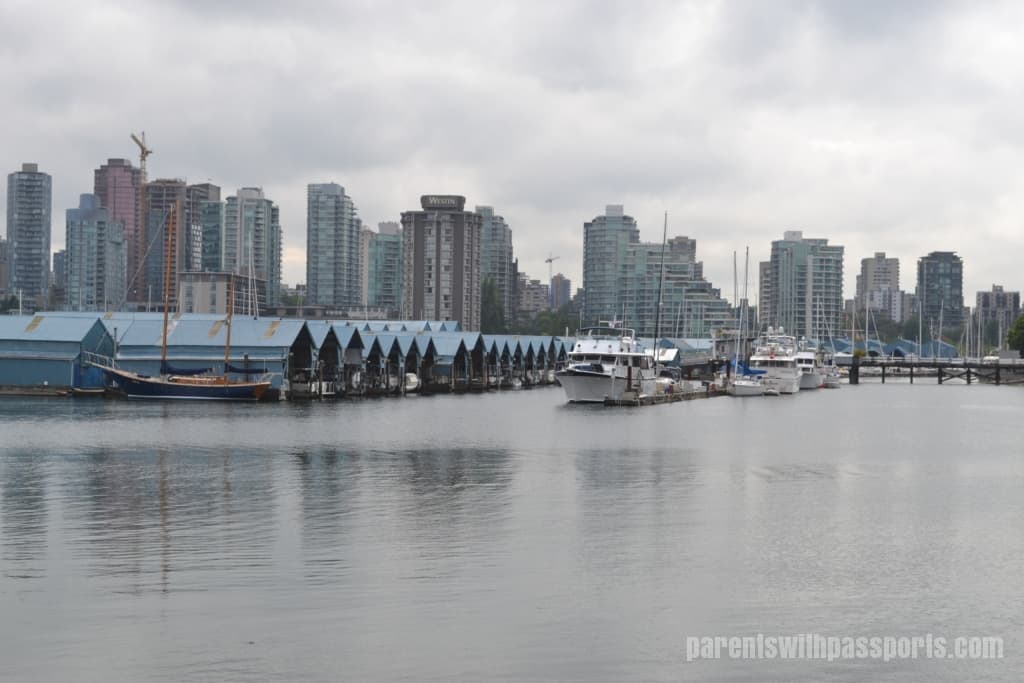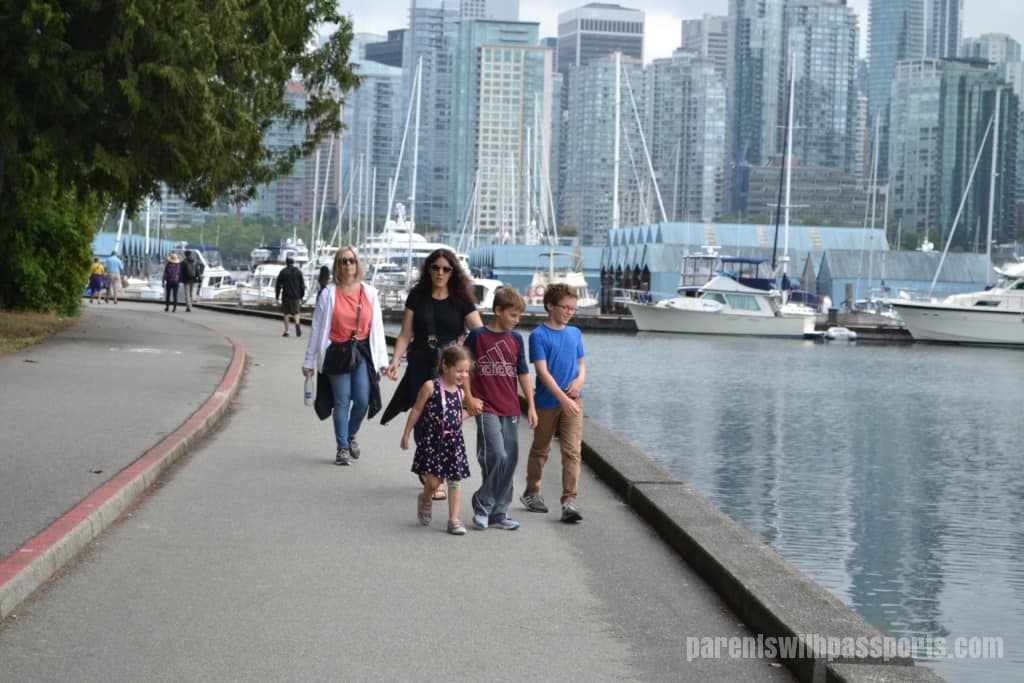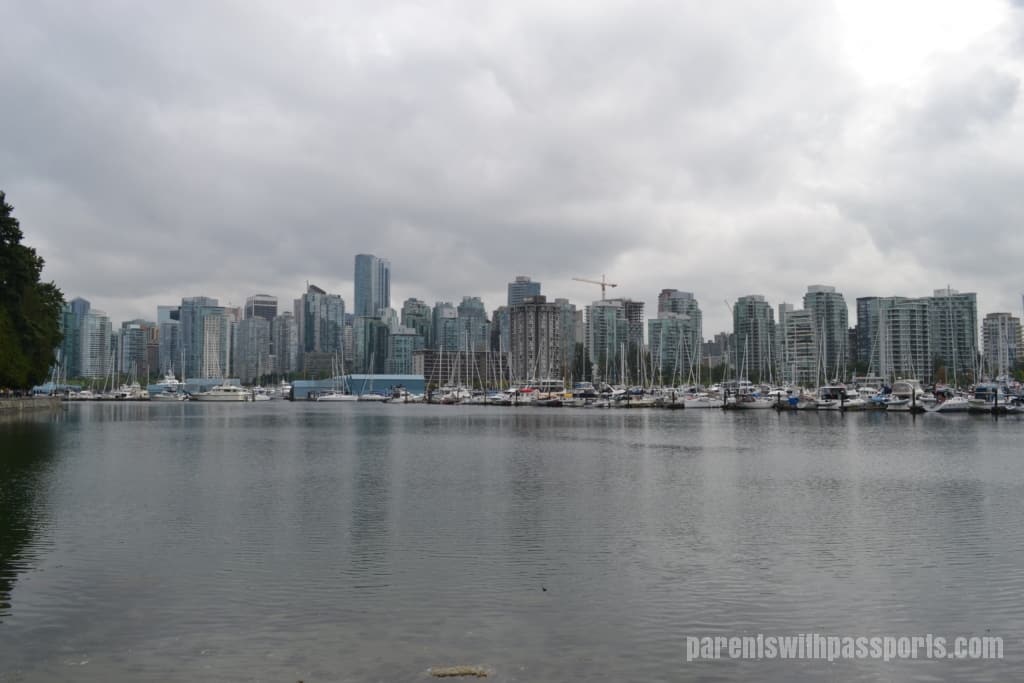At 1,000 acres, Stanley Park is the third largest public park in North America and consistently ranked among the world’s best. Located on a peninsula in the northwest corner of Vancouver, the park is primarily made up of dense forest, making it unique among urban parks. It is a true urban oasis with almost half a million trees and 40 miles of forested trails all just a stone’s throw away from the downtown area of Canada’s 3rd largest city.
While the forested interior of the park is unique and impressive, the perimeter of the park often garners the most attention (or at least the most crowds). The park boasts incredible water, mountain, and city views, all of which can be enjoyed from the 10km long seawall that loops around the park.
The Vancouver Aquarium is located on the east side of the park. After our morning aquarium visit, we decided to chance the weather and walk around the park. We headed east out of the aquarium and stumbled across the Brockton Playing Fields, where the kids sat and watched a cricket match for a few minutes. It was a pretty unique vantage point with the cruise ships docked at Canada Place in the background.
We continued to cut east until we hit the seawall. Getting from the inner part of Stanley Park to the path along the water was not a proverbial walk in the park. Crossing crowded parking lots, busy streets, and the heavily trafficked bike path made for an adventurous walk. Be sure to hold on to young kids’ hands as you navigate to the walking path of the seawall, especially while crossing the bike path.
When we finally made it to the seawall, we were greeted with a view of the Brockton Lighthouse. In the early 1900s, red and white lanterns hung from a mast at this point, but they failed to properly illuminate the sharp turn at the point. After many shipwrecks, the lighthouse was constructed in 1914. The century old white lighthouse with the red stripe is a Stanley Park landmark.
We didn’t actually walk all the way around past the lighthouse because we headed to the interior section of Brockton Point to see the totem poles. The 9 totem poles that stand tall among the trees at Brockton Point are the most visited attraction in British Columbia. The original totem poles were brought to the park in the 1920s, although some of them had been carved as early as the 1880s. The originals have since been sent to museums for preservation, and the replacement poles standing today are between 10 and 35 years old.
I had been really excited to see the totem poles, having read so much about them and seeing them on so many “must-see” lists for Vancouver. I’ll admit I was a little underwhelmed by the experience. Don’t get me wrong; the poles themselves are incredible. The artistry of the totems is undeniable. But I felt like the presentation was lacking. It felt a little like they were randomly placed on a patch of grass in front of some trees. Weeds grew up around the base of the totems and it seemed like the site just wasn’t well maintained. Maybe we had been spoiled by the totem poles at Capilano Suspension Bridge Park which were, in contrast, beautifully presented and maintained.
But regardless of the setting, the totem poles are true works of art and worth stopping by to admire. The carvings are amazing and the colors really bring the figures to life.
Among the many statues in Stanley Park is the Shore to Shore bronze sculpture located next to the totem poles on Brockton Point. The statue celebrates “Portuguese Joe”, a whaler and Gastown saloon owner who lived in Stanley Park, and his first and second wives who were Coast Salish First Nations. He is credited with bridging the cultural gap between the Portuguese and First Nations peoples in the late 1800s. The statue, made of Portuguese stone, is a beautiful representation of both cultures.
From Brockton Point we made our way back to the seawall and continued our walk back towards the city. The paved seawall path is split between a walking path right along the water and a bike path inside it. The cyclists definitely whiz by quickly on one side and the path drops off into the water on the other, so keep your kids solidly in the walking lane. The views of the harbor and city are great from the path.
Overall we spent about an hour and a half walking around Stanley Park after our aquarium visit. While I left our first two Vancouver outings (Grouse Mountain and Capilano Suspension Bridge) feeling like we had successfully hit the highlights, we didn’t even scratch the surface of Stanley Park. There is so much to see and do there and we just did a small fraction of it. Had it been a nicer day, we could have easily wandered the park for hours and found a dozen activities to entertain ourselves with. Renting bikes, taking a carriage ride, playing on the beach or at the waterpark, checking out all the scenic viewpoints and points of interest. The possibilities were endless, and it makes me both sad that we had a less than ideal weather weekend and excited for a return trip so we can really do the park justice.
